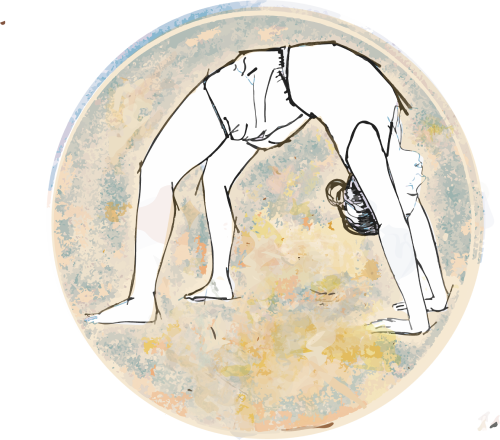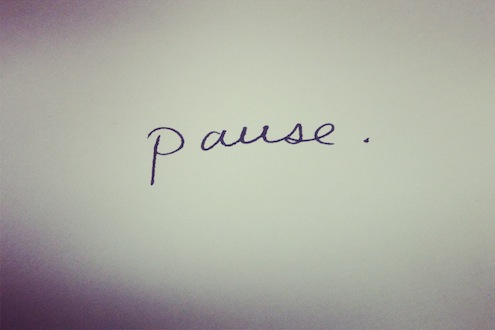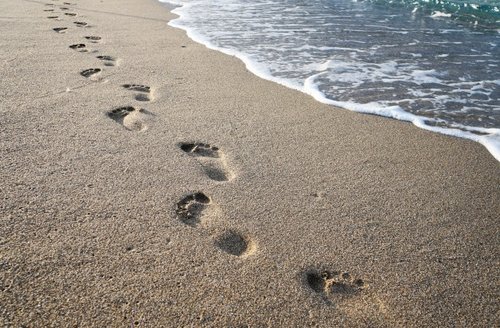[vc_row][vc_column][vc_column_text]
Long post alert!
Go straight to the last section “Life Adaptations” section if you are interested only in the “call to action”. The measures listed in this section are based primarily on principles of ayurveda – specifically directed at high vata dosha, and on my personal experience.
Menopause is the complete cessation of menstruation for a period of 1 year. Average age of menopause of an Indian woman is 46.2 years – less than their Western counterparts (51 years).
Perimenopause is defined as the time of irregular periods until menopause. its duration is variable. The perimenopausal age in Indian women is 44.69 years.*
My attention was drawn to menopause a few years ago when a few of our students spoke about their struggles in dealing with this transition stage. Menopause is not just loss of fertility, but is regarded as a biomarker for an increased risk for various mid-life diseases and problems. It seemed like a good reason to investigate further. a couple of observations thrown up by my research:
-
Apart from my Indian teachers who i spoke with about the practice of yoga during this phase, the sources of information were predominantly western. there are online resources, advice columns and plenty of discussion forums. but almost all of it originates in western societies – including the yoga books that have been written on the subject.
-
the experiences going through the transition were predominantly negetive. although there is almost unanimous recognition that the post-menpausal period can unleash a new, creative phase in women, the transition itself is described in painful terms. This could just be a reporting bias, but it does strike considerable fear in the hearts of women as they reach their mid-forties.
Reason for this blog
a few years later, i find myself facing the end of my reproductive cycle. I am documenting my own experience, because:
-
my journey thus far has not been negetive – and maybe my adaptation strategies work to some extent.
-
There is no difference in the reproductive physiology of women of different races. But we do live in very different cultural and geo-climatic milieus, and how we approach life situations need not be exactly the same. mine have some distinctly indian characteristics.
-
I write with particular reference to my ayurvedic constitution (prakriti) of high vata dosha. ayurveda determines our constitution in terms of a combination of three doshas – vata, pitta, and kapha. our constitution is determined much before our birth – at the time of our conception. but it is greatly influenced by our age, lifestyle, and where we live. this is a beautiful marriage of the Nature vs Nurture debate. if the concept of ‘dosha’ is new to you, there are several online resources, and many good books that give an introduction to ayurveda. but also, if you are already in a diseased or ‘unbalanced’ state, it is best to consult with an ayurvedic doctor – a ‘vaidya’ – to diagnose your tridoshic profile.
Even if one’s basic constitution is not vata dosha dominant, old age is regarded as a period of vata dosha aggravation for everyone. City life with its sensory overload, electronic devices, daily commutes and frequent travels, and synthetic substances that abound around us, also contributes to vata dosha aggravation. So, the information here is of relevance even for those whose ayurvedic constitution is not the same as mine. -
disclaimer: i have not had a consultation with any ayurvedic vaidya about menopause. what i write here is based on my understanding of ayurveda gleaned from readings, experimenting and discussing over the previous years. i also do not provide any prescriptions here. indeed, i continue to disregard my own advice every now and then. but i do clearly see the relationship between certain actions, and their results.
Profile
if not our whole life, at least the previous decade, shapes how women make the transition to menopause. Each individual is unique, and this is not a typical profile:
-
i have had a fairly serious yoga practice since close to twenty years. Especially in the last decade, i have paid attention to following the recommendations for an adapted yoga practice in sync with the menstrual cycle We are fortunate in our tradition to have teachers who have studied and laid down guidelines for pre and post-menstrual practices, in addition the yoga practice during the days of the monthly period.
-
i have chosen not to have children, and am therefore, have not faced the ‘empty nest’ syndrome that seems to accompany many women’s transition into menopause.
-
i am a vegetarian, and have slowly eliminated refined and processed food, from my diet. i do not smoke or drink alcohol.
-
i have not had a high-stress career, and have been blessed with a supportive family.
-
i teach yoga, and this involves being on my feet, talking a lot, and interacting with many people every day
-
as if to compensate for the fact that hormonal disturbances have not caused me anxiety, external events have made the last year stressful both physically and emotionally. the body’s hardwiring ultimately reacts in the same way to physical, psychological and chemical stress. This is good news – because we can harness this body-mind-breath connection to our benefit. I can say that i have gone through the last year with with resilience, if not with aplomb.
Experience
in the vedic ashrama system, Vanaprastha is recognised as the third of the four stages of of human life. At this time, one voluntarily starts disengaging from worldly ties. As a student of yoga, i think of this as analogous to the pratyahara of the eight-fold path of yoga. As the senses release their hold on the mind, the mind turns inward. This is not a forceful denial of worldly pleasures, but a natural progression of a well-prepared mind.
My fertility cycle is still functioning – although in fits and starts. Significant changes have been occurring in my physiology and mental state over the last few years, but these have not caused emotional, physical and physiological trauma. I think this is in equal measures due to my pre-existing lifestyle (indicated in the previous section), and the more recent life choices (described in the next section). The changes that i have been experiencing in the last couple of years all broadly fall under symptoms of vata dosha derangement (old age, post-partum period, dry and cold weather, high stress levels typically lead to vata aggravation). More specifically, these changes include:
-
increased sensitivity to sensory (all five senses+mind) stimulii. While ears are recognised to be the seat of vata, i find myself instinctively evaluating each real and virtual sensory interaction . My eyesight has weakened, and I now watch movies after much consideration. Desserts are no longer eaten indiscriminately, and social interactions with people is now done very selectively.
-
increased sensitivity to disturbances in my daily schedule. One’s daily routine – dinacharya – is given great importance in Ayurveda. The times of eating, sleeping and waking up, as well as seasonal adaptations, are all important considerations. i find myself especially sensitive to disturbances during the vata period (2am to 6am in the morning, and 2pm to 6pm in the afternoon/ evening).
Lifestyle adaptations
The adaptations and lifestyle changes described here happened either intuitively, or serendipitously. But in retrospect, they have all contributed to not just an easy transition to menopause, but also a much richer life:
-
dinacharya – the daily schedule
-
The doshas dominate fixed hours of the day. I am usually either resting or practicing during the the high vata periods (2am to 6am, and 2pm to 6pm). Not doing this, leaves me feeling either dull and heavy (e.g. sleeping till late) or leaves me feeling tired and anxious. The largest meal of the day is eaten at the time when pitta (the controller of heat, and hence digestive fire in the body) is the highest – around 12 pm, and the kapha hours (6am – 10am and 6pm -10pm) are spent quite actively. i am still working towards fitting in an early dinner in my life. I intuitively took to this daily schedule a few years ago, but i realise that this lifestyle might not be practical for many women. but the simple principles of going to bed early, waking up early, and eating at the right hours are probably the most important principles of an ayurvedic dinacharya.
-
food – warming, nourishing food, predominantly sweet and salty tastes balance vata dosha. all refined and processed food, including refined sugar, crispy dry snacks, pungent and fermented food aggravate vata dosha. well cooked rice, light lentils, hearty vegetables, natural sweeteners and good quality fat should form the bulk of diet. Vata digestion is variable and gets easily effected not just by the kind of food, but also the time of eating. Ayurveda prescribes mostly easy to follow dietary recommendations for all the three types of doshas, and if we work a little sensitively, it is not so difficult to realise what works for us and what doesnt. Ayurvedic recommendations are quite often in line with modern trends of healthy eating – e.g. organic produce, freshly cooked food; but sometimes they are not – e.g. ayurveda is not vegan, it does not advocate for eliminate of all oils and fats from our food, and it doesnt recommend an over dependence on raw food or fruits.
-
resting – sleep has been the subject of many scientific researches in the recent part, and its role in reducing stress, enhancing memory and immunity is now clearly recognised by modern science. Adequate sleep is especially recommended for vata dosha (the three prakritis have differing sleep requirements – with vata dosha needing the longest – 7-8 hours of sleep daily). An afternoon nap is an essential part of my daily routine (ayurveda strongly recommends against sleeping in the afternoons for healthy adults! It makes exceptions for those who are ill or extremely tired).
-
-
OILS – vata dosha, given to dryness, loves good quality oils and fats. there are three forms in which these can be taken in by the body:
-
ingestion – organic cow ghee is one of the most prized ingredients in ayurveda – it nourishes and balances all the three doshas. yes, it is also all saturated fat (oestrogen production by ovaries tapers off, and then stops at menopause. guess who else in the body makes oestrogen? – fat cells! gaining weight at the time of menopause is not necessarily a bad thing). Sesame oil is also used extensively in ayurvedic preparations. I use this both for cooking sesame oil, and also consume sesame butter (tahini) on bread, mixed with rice, in salad dressing.
-
External application. dry, coarse, dull skin and hair are some of the most tell-tale signs of vata dosha aggravation. application of synthetic ‘moisturisers’ are only a short term solution, and in fact will aggravate vata dosha.
-
Abhyanga – self massage with warmed, dosha-specific oils is a very important dinacharya for skin. the skin is the seat of both pitta and vata dosha. regular abhyanga moisturises and nourishes vata dosha and it cools and pacifies pitta dosha – not to mention that it leaves the skin looking healthy. For women, a regular abhyanga improves hormonal balance in general, and by regulating the apana vayu, it is useful in regulation of menstrual cramps, and promotes proper functioning of female reproductive system. vata dosha controls all movements and resides in the joints. a regular abhyanga, therefore, promotes joint health and gives relief from joint pains.
Warm bath with a natural grain and herb based ubtan (body wash) is recommended after abhyanga.
-
Oiling hair and feet- regular oiling of the head with the appropriate oil (usually not the same oil as used in abhyanga for the body), and oiling feet before going to bed at night a few times in the week, over and above the whole-body abhyanga, promotes sleep, and reduces stress. unfortunately, ‘oiled hair’ is not a fashion trend right now, but this is one old-fashioned idea that we need to bring back into fashion.
-
-
-
Other herbs recommended in ayurveda – ayurvedic herbal supplements can be generic (can be taken without consultation with a vaidya) or specific (should be taken only after consultation with a vaidya). the few that i take either regularly or sporadically are well known as traditional remedies/ supplements :
-
triphala – this is an ayurvedic formula consisting of equal parts of three fruits (taken without their seeds): Amalaki (Emblica officinalis), Bibhitaki (Terminalia bellirica), Haritaki (Terminalia chebula). In ayurveda, triphala is considered a ‘tridoshic rasayan‘, having balancing and rejuvenating effects on the three constitutional types. Specifically, triphala is used for improvement of digestion, relief of constipation, gastrointestinal tract cleansing, relief from abdominal gas, treatment of diabetes, treatment of eye disease. it is to be noted that bile
-
herbs that balance vata dosha and support the female reproductive system – ashwagandha, shatavari and other ayurvedic herbs are available in ayurvedic pharmacies in over-ther-counter powder or capsule form. but these are best taken in consultation with a vaidya
-
-
eliminating ‘endocrine disruptors’. the presence of synthetically manufactured chemicals in our lives is all pervasive. many of these mimic natural hormones, and interfere with their functioning in the body. women going through menopause, where hormonal levels are naturally fluctuating, are particularly sensitive to endocrine disruptors. this is a list of sources of potential exposure :
-
personal care products – shampoos, detergents, conditioners, perfumes, make-up
-
certain kinds of plastic used in packaging
-
conventionally grown produce
-
cleaning products
-
cookware
It takes consistent effort to identify and eliminate these products in our homes. although the list looks daunting, the first substances to target can be those that enter into our bodies directly – either through ingestion, or through the skin.
-
-
A quieter and more sensitive asana and pranayama practice- Not having a regular teacher puts my asana/ pranayama practice at my own mercy. this is a slippery slope – but also an opportunity. Over the last couple of years, the practice of pranayama has become more regular. there have been days when i have been too anxious to pick myself up to practice any asana, and have worked with recordings of long prayanama classes. There have been days when i have done supported savasana for the entire duration of the practice time available to me. Even though i have not yet faced the typical symptoms of menopause, i have also taken this time to fully explore the range of asanas that are advised at this time – asanas that focus on resting, rejuvenating and promoting the health of the female reproductive system. these include supine, seated, forward extensions and inverted positions – most of them done with support. Almost every time i have been able to step aside and observe clearly the effect of such practices. every such practice has left me feeling refreshed and energised. Interestingly, this has also been the period when i have been able to work up the courage to move away from walls, and fall backwards from an adhomukha vrksasana or a pinca mayurasana, or to try a particularly difficult backward extension.
-
Devotion. Patanjali mentions isvara pranidhana more than once in the yoga sutras. Transcendence by taking recourse to a higher power is a recurring thought in both Eastern and Western mysticism. For the more fortunate ones, this comes naturally. For others, this is an acquired skill. Like any other skill, devotion also requires constant practice, patience, and the deployment of the appropriate tools. It is an effort worth making, at any time in ones life, but especially at this time.
*Journal of midlife Health, July-Sep, 2016 (https://www.ncbi.nlm.nih.gov/pmc/articles/PMC5051232/)
We do a workshop series on ‘Transitioning to Menopause’, with a focus on the practice of yoga, but also looking at this from the ayurvedic , and the western medical science perspective.
We also do a workshop series on menstural practices for all women. In addition to practice of asanas, this workshop discusses lifestyle adaptations for the days of the monthly period based on principles of ayurveda.
[/vc_column_text][/vc_column][/vc_row]





